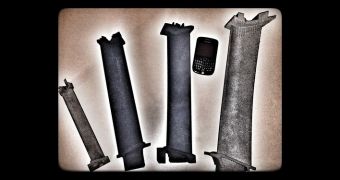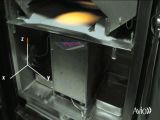Consumer-grade 3D printing may be a new thing, but additive manufacturing technologies have been used for 30 years at this point. One of the most popular, selective laser sintering, has just received an upgrade.
Then again, it would be just as accurate to say that selective laser sintering was about to be replaced by a new and much better metal-based additive manufacturing technology.
After all, electron guns don't exactly produce lasers (concentrated beams of light). And that's exactly what the new 3D printing technique employs: an electron gun.
General Electric revealed the breakthrough, although it's not them that the electron beam melting (EBM) gun came from. No, the praise goes to Italian aerospace company Avio, which GE acquired last year.
Anyway, General Electric wants to 3D print the turbines set to be used in the upcoming GE9X engine, which is meant to power the new Boeing 777X passenger aircraft. It's an airplane that will enter production in 2017.
In theory, it would be possible to manufacture the turbines using standard selective laser sintering, but the electron gun is ten times stronger.
Because of that superior ability to heat and melt metal, objects can be made four times thicker than before, and much more quickly. Apparently, it's enough to make eight turbine blades in just 72 hours with a single machine.
And we're not talking about some random metal, like iron or even steel. The printing process can build those types of objects we mentioned from an advanced aerospace material called titanium aluminide. Normally, the material is very capricious, but being 50% lighter than nickel-based alloys has offset the problems so far. The new electron gun-based print process will finally render it less frustrating to process.
The material will still be very expensive, but at least cost and time-to-market will be reduced at the part manufacture and assembly stages, so that's something.
Global Electric will begin testing the EBM manufactured blades for the GEnx engine before the end of 2014. After that, it will start making blades for the GE9X engine. Well, assuming tests return the desired results, which is more or less guaranteed at this point.
We're not certain when, if ever, EBM manufacturing will spread to other fields. The military might do something with it if they get their hands on a machine or two, but for everything else normal sintering should be more than enough. No need to go overboard unless absolutely necessary after all.

 14 DAY TRIAL //
14 DAY TRIAL // 

